Israel and Egypt have maintained restrictions on Gaza leading up today’s blockade since Hamas seized control of the Strip in 2007.
Often overlooked, forgotten or taken for granted in media coverage and public discussion is the reason for the blockade: the threat of Hamas weapons smuggling.
Egypt captured Gaza during the 1948 Israeli War of Independence. The Strip would remain under Egyptian military occupation until the Six-Day War of 1967. Israel’s administration allowed Jews to settle in the Strip. (The Jewish Virtual Library expands on historical Jewish ties to Gaza). When Israel unilaterally disengaged from Gaza in 2005, 8,000 settlers were evacuated from 21 settlements. The Fatah-led Palestinian Authority managed Gaza’s affairs until 2007, when Hamas violently seized control of the Strip, killing and expelling Fatah personnel.
The Hamas takeover destroyed international agreements between Israel, the Palestinian Authority and Egypt over Gaza’s border crossings. PA personnel and European monitors manning the crossings fled the violence.
Join the fight for Israel’s fair coverage in the news
Since Hamas seized power, Israel has fought three wars in Gaza (Operation Cast Lead in 2008-09, Operation Pillar of Defense in 2012, and Operation Protective Edge in 2014). The IDF has foiled a number of attempts to smuggle Iranian arms to Gaza. Egypt has also has also periodically moved against Gaza-Sinai smuggling tunnels. Hamas has an up-and-down relationship with jihadist insurgents in the Sinai fighting the Egyptian military.
(For the sake of brevity, we look forward to addressing the legality of the Gaza blockade separately. For the time being, readers interested to learn more can see International Law and the Fighting in Gaza by Justus Reid Weiner and Avi Bell.)
Related reading: Focus on Hamas: A Brutal Terror Organization
The Cairo Context
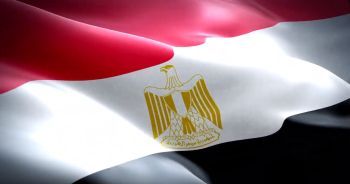 The Hamas coup set off alarm bells in both Israel and Egypt and the two countries established a blockade of the Strip. Jerusalem was worried because Hamas is sworn to Israel’s destruction.
The Hamas coup set off alarm bells in both Israel and Egypt and the two countries established a blockade of the Strip. Jerusalem was worried because Hamas is sworn to Israel’s destruction.
Cairo’s concerns, however, aren’t as fully understood in the West but are a critical part of the Gaza blockade’s background.
Hamas is an ideological offshoot of the Muslim Brotherhood. Article II of the Hamas covenant identifies the organization as “one of the wings of Muslim Brotherhood in Palestine.” The Brotherhood, which was founded in Egypt in 1928 by Hassan al-Banna, seeks to spread Islamist rule throughout the Middle East. In the years before Israel’s founding, the Brotherhood provided support for Palestinian terror attacks associated with the Mufti of Jerusalem, Haj Amin al-Husseini. Egypt’s failure to prevent the establishment of Israel led the Brotherhood to increase its rhetoric against King Farouk and attacks on government officials. Banna’s assassination in 1949 is widely thought to have been carried out by the Egyptian Iron Guard, a royalist movement which Farouk used to settle political and personal vendettas.
Successive Egyptian leaders Gamel Abdel Nasser, Anwar Sadat and Hosni Mubarak suppressed the Brotherhood. But the Egyptian Revolution turned the tables. In 2012 elections, the Brotherhood-affiliated Freedom and Justice Party’s candidate, Mohamed Morsi, was elected president. The FJP also won 47 percent of the Egyptian parliament. The Brotherhood sought to draft a new constitution enshrining Islamic law and authorizing the president wide powers to “protect the revolution.” The power struggle came to a head in 2013, when, in the face of mass anti-government protests, the Egyptian military overthrew Morsi, arrested Brotherhood members and seized the organization’s assets.
Despite being crushed in Egypt, the Brotherhood has affiliates in numerous other Arab countries, Europe and even Israel. (The Islamic Movement in Israel split in 1993 over the Oslo accords. The “Southern Branch” accepted Oslo and eventually ran in Knesset elections. The “Northern Branch” rejected Oslo and was outlawed in 2015 over its ties to Hamas.)
Timeline of Key Events
To better understand the Gaza blockade’s history, here is a timeline of key events followed by background information on Gaza’s three operational border crossings.
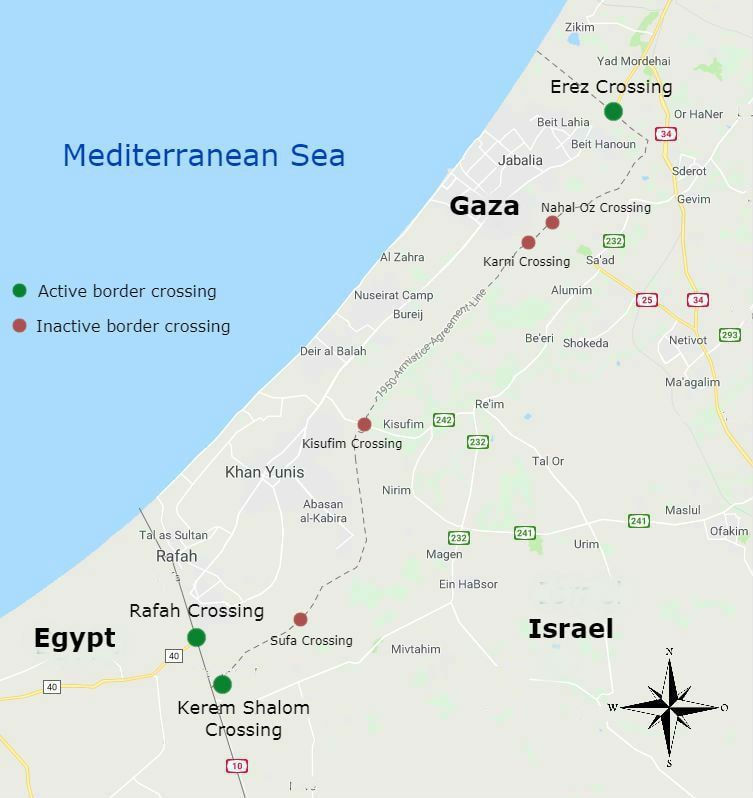
Sept. 12, 2005: Israel completes Gaza disengagement, evacuating 8,000 settlers from 21 Jewish communities in the Strip. Israel continues maintaining control of territorial waters, air space and borders. The PA, which administers Gaza, takes control of the Palestinian side of the border crossings, which remain open.
Sept. 23, 2005: Palestinians in Gaza fire first post-disengagement rockets at Israel.
Nov. 24, 2005: European monitors deploy to the Rafah border crossing as part of deal allowing PA control of the Gaza side of the crossing.
Related reading: How Israelis Cope With the Gaza Rocket Threat
Jan. 25, 2006: Hamas wins Palestinian majority of seats in Palestinian legislative elections.
Jan. 30, 2006: The Quartet (the UN, US, EU and Russia) issues a statement demanding the new Palestinian government renounce violence, recognize Israel, and adhere to previous Israeli-Palestinian agreements. (The UN Security Council later endorsed the Quartet’s three principles in 2008.)
Feb. 20, 2006: Israel rules out contacts with any Palestinian government in which Hamas has a role.
June 25, 2006: In a cross-border raid, Hamas abducts IDF soldier Gilad Shalit and kills three other soldiers. Israel tightens its closure of Gaza to prevent possibility of Shalit being smuggled out of the Strip. A month-long military operation is waged in Gaza.
March 12, 2007: Islamists abduct the BBC’s Gaza correspondent Alan Johnston. The high profile affair ended with his release on July 4, 2007.
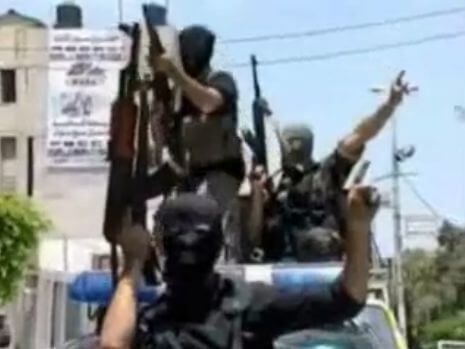
June 10-15, 2007: The Battle of Gaza: In a bloody coup, Hamas seizes control of Strip, murdering PA personnel and ousting Fatah. As security deteriorates, PA officials and European monitors flee the Rafah border crossings. With the PA no longer manning the border crossings, Israel closes the Karni crossing and Egypt closes the Rafah crossing. (Before Hamas seized power, an average of about 1,500 people a day used the Rafah crossing.) To curb weapons smuggling, Israel and Egypt impose restriction on Gaza’s maritime traffic.
Jan 23, 2008: Hamas breaches border wall with Egypt; hundreds of thousands of Palestinians pour into the Sinai to purchase essentials. The UN estimated that as much as half of Gaza’s 1.5 million population crossed the border.
Feb. 3, 2008: Egyptian forces and Hamas seal the Gaza-Sinai border.
Aug. 11, 2008: The Israeli government publishes a Notice to Mariners that it defines maritime region adjacent to Gaza as a war zone and that the Israeli Navy reserves the right to inspect and act against vessels bound for the Strip. This policy is known as “Visit and Search.”
Dec. 27, 2008: IDF launches Operation Cast Lead in response to Gaza rocket fire.
Jan. 3, 2009: Full Israeli naval blockade goes into effect, replacing “Visit and Search.”
Jan. 2009: Israeli air strike in Sudan destroys a 23-truck convoy carrying Iranian rockets intended for Gaza terror groups.
Jan. 18, 2009: Operation Cast Lead ends with unilateral ceasefire.
Related reading: In Focus: Israel’s Gaza Wars
Sept. 15, 2009: The UN releases the findings of its controversial inquiry and report (the Goldstone report) on Operation Cast Lead. In April, 2011, lead investigator Judge Richard Goldstone recanted the report’s most contentious conclusions about Palestinian civilian deaths.
May 31, 2010: Israeli naval forces intercept a six-ship flotilla trying to symbolically break the Gaza blockade. Ten Turkish Islamists die in violent clashes aboard the Mavi Marmara.
March 15, 2011: Israeli naval forces intercept the Victoria, seizing approximately 50 tons of weapons, as well as manuals written in Farsi, intended for Hamas.
Sept. 2, 2011: An independent UN inquiry into the Mavi Marmara affair (the Palmer report) criticizes Israeli forces for using excessive force but upholds the blockade’s legality. (See also the Turkel report, the independent Israeli inquiry’s findings, which elaborated on the blockade’s legality.)
Oct. 18, 2011: Hamas frees Gilad Shalit in prisoner swap. Israel immediately frees 477 prisoners plus another 550 in December.
Oct. 23 2012: A Sudanese munitions factory reportedly owned by the Iranian Revolutionary Guards is destroyed in an explosion attributed to Israel.
Nov. 14, 2012: IDF launches Operation Pillar of Defense in response to Gaza rocket fire.
Nov. 21, 2012: Cease-fire ends Operation Pillar of Defense.
March 5, 2014: Israeli naval forces intercept the Klos-C, seizing an undisclosed amount of Iranian-made weapons intended for Gaza terror groups.
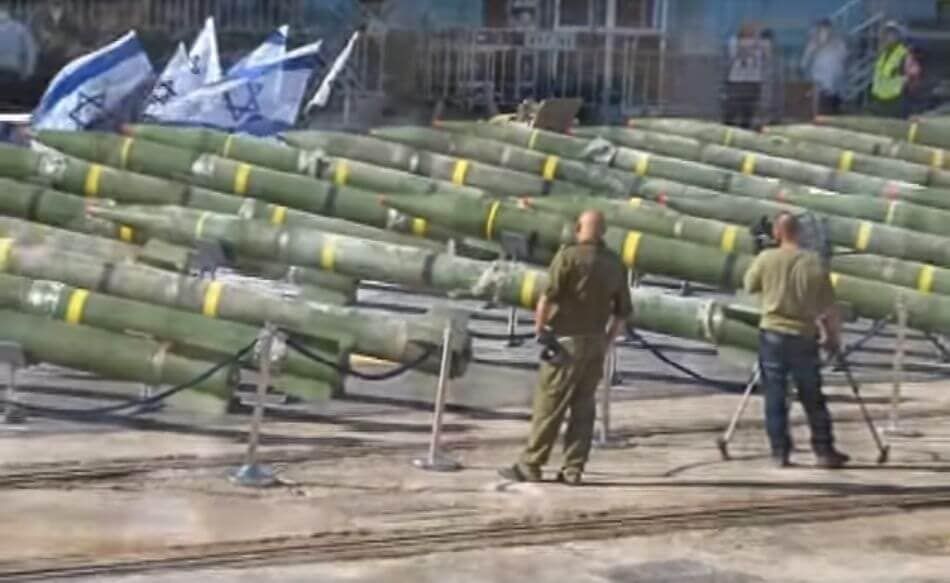
July 8, 2014: IDF launches Operation Protective Edge in response to Gaza rocket fire and the Hamas kidnapping/murder of three Israeli teenagers in the West Bank.
July 20, 2014: Hamas captures the bodies of Lt. Hadar Goldin and Staff Sgt. Oron Shaul, who were killed in an ambush after a ceasefire had taken effect. Hamas holds their bodies to this day.
July 23, 2014: Israeli engineers and scientists conduct first tests on a high-tech tunnel detection system.
Aug. 26, 2014: Operation Protective Edge ends as ceasefire takes hold.
Sept. 7, 2014: Avraham Mengistu, a mentally unstable Israeli, manages to cross the border into Gaza. Hamas holds Mengistu to this day.
Oct. 24, 2014: Islamist insurgents in the Sinai kill 31 Egyptian soldiers in two attacks on military positions. Among the responses by Cairo was an announcement of plans to expand a buffer zone along the Egypt-Gaza border
Jan. 8, 2015: Having discovered smuggling tunnels longer than expected, Egypt doubles the width of the Gaza buffer zone. Nearly 1,220 homes are demolished and 1,600 tunnels destroyed.
April 20, 2015: Hisham al-Sayed, a mentally unstable Israeli Bedouin, manages to cross the border into Gaza. Hamas holds Sayed to this day.
Sept. 11, 2015: Egyptian military begins pumping seawater into cross-border tunnels.
Related reading: Israel’s Disproportionate Civil Defense
April 17, 2017: Gaza’s sole electric power plant runs out of fuel for the first time. Hamas and Fatah blame each other. Electricity from Israel and Egypt provides only four of hours daily of power to the Strip.
Jan. 17, 2018: Israel reveals plans for a 40-mile underground border barrier to block Palestinian tunnels into Israel.
March 30, 2018: Palestinians clash with Israeli soldiers in the first of weekly “March of Return” violence along the Gaza border.
May 12, 2018: IDF destroys Hamas terror tunnel beneath the Erez border crossing.
May 29, 2018: IDF destroys Hamas terror tunnel under Kerem Shalom crossing that curled under Egyptian territory.
May 27, 2018: Israel announces start of construction of an underwater sea barrier to prevent infiltration.
Nov. 12, 2018: Following a botched Israeli intelligence operation in the Strip, Palestinians fire approximately 400 rockets at Israel, the largest barrage ever in a 24-hour period.
Nov. 12, 2019: Following an early-morning strike on an Islamic Jihad leader, over 450 missiles are launched at Israel by Islamic Jihad. In a break with its standard policy, Israel does not attack Hamas, whom it holds responsible for the Gaza Strip, and Hamas does not intervene.
Related reading: Israel’s Great Risk for Peace: The 2005 Gaza Disengagement
Gaza’s Three Border Crossings
Erez crossing: (with Israel): This terminal, the only crossing point for pedestrian traffic, is primarily used by international personnel such as diplomats, aid workers, journalists and also Palestinians with permits to leave Gaza, usually for medical treatment.
Israel is forced to scrutinize requests for medical permits because Hamas has used Palestinians being treated in Israel to pass messages to terror operatives in the West Bank. And healthy Palestinians trying to leave the Strip have paid doctors to write referrals for treatment abroad.
Further complicating matters, the Palestinian Authority often blocks patients from leaving the Strip by holding up the release of payment vouchers and delaying the transfer of drugs from West Bank warehouses, while cheap black market medicines smuggled from Egypt are fueling Gaza’s opioid crisis.
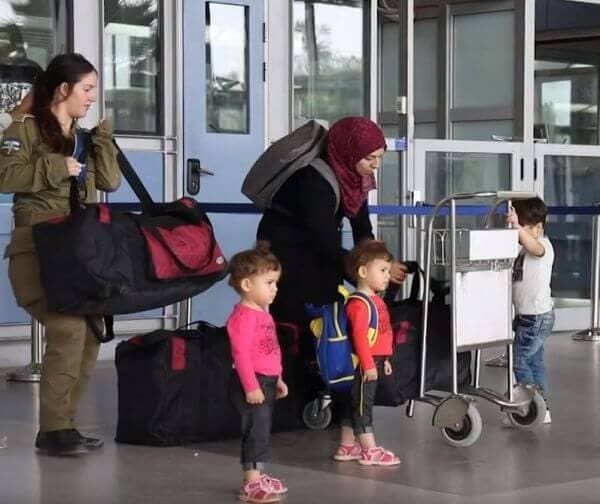
Kerem Shalom crossing (with Israel): Located at the convergence of the Gaza, Israeli and Egyptian borders, this crossing is used by all trucks delivering goods from both Israel and Egypt to the Strip. As other border crossings (noted below) were closed, Kerem Shalom became the sole transfer point. It currently sees an average of 100,000 tons of items delivered to the Strip.
Here’s a by-the-numbers look at what 147,540 trucks delivered to Gaza in 2017 per COGAT (Coordinator of Government Activities in the Territories, a unit within the Defense Ministry which implements civilian policy in the West Bank and Gaza in liaison with the Palestinian Authority and other relevant international aid organizations).
- 3,383,440: tons of construction materials
- 568,744: tons of food
- 637,111: tons of gas
- 155,038: liters of diesel fuel
- 40,696: liters of gasoline
- 7,044: tons of medical equipment
- 3,154: vehicles
Further, more than 6.5 million tons of construction materials have been brought into the Strip to rebuild homes, roads, public facilities and other infrastructure since the 2014 Gaza war.
It’s worth noting that goods also flow out of Gaza through Kerem Shalom. Agricultural produce, textiles and other Palestinian exports pass through Kerem Shalom for sale around the world. For example, Gaza exported 36,765 tons of produce in 2015.
In addition, Israel provides Gaza with 125 megawatts of electricity (half of the Strip’s needs) and 10 million cubic meters of water.
Rafah crossing (with Egypt): This crossing for pedestrians is the only direct passage between Egypt and Gaza. Since President Abdel Fattah el-Sisi came to power in 2013, Rafah is only opened sporadically. Egyptian trucks delivering goods are directed to the Kerem Shalom crossing, which is operated by Israel.
Three other Israel-Gaza border crossings are non-operational. The Sufa crossing was primarily used for deliveries of construction materials and closed in 2008. The Nahal Oz crossing — where underground lines transferred gas and fuel — was closed in 2010. Of all the border crossings, the Karni crossing had the highest capacity for truck deliveries. Its operations were reduced in 2007 and finally closed in March, 2011.
* * *
Images: Egypt via YouTube/ONLINE; gunmen screengrab via military.com; Klos C via YouTube/”Yerushalayim” – TV magazine in Russian about Israel; Erez crossing via YouTube/COGAT;

